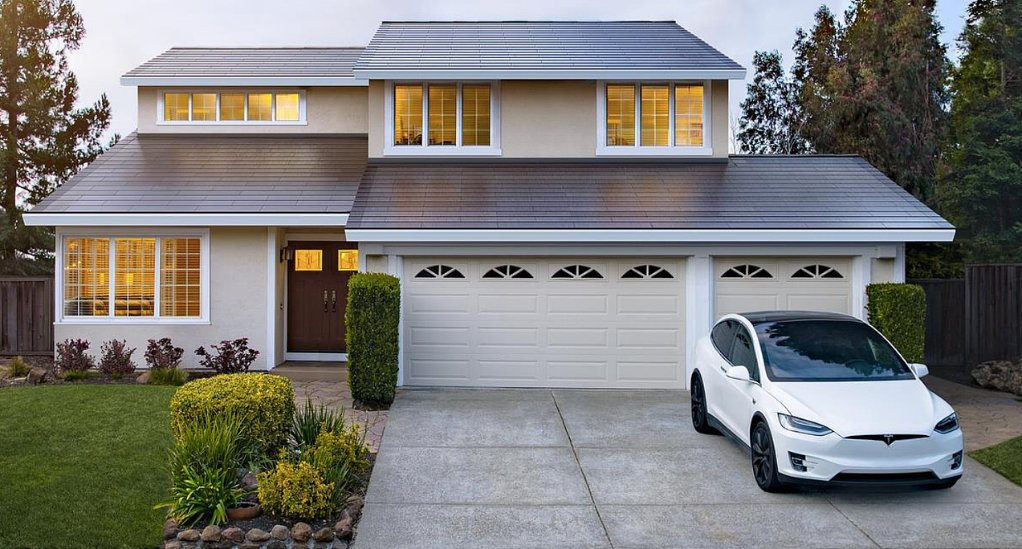In recent years, the conversation surrounding renewable energy sources has intensified, with many individuals and corporations alike seeking sustainable alternatives to traditional energy solutions. At the forefront of this revolution is Tesla, a company renowned for its innovation in the electric vehicle sector, now making significant strides in the renewable energy space. In this section, we delve deep into the background of Tesla’s venture into solar energy and the importance of shifting towards renewable energy sources.
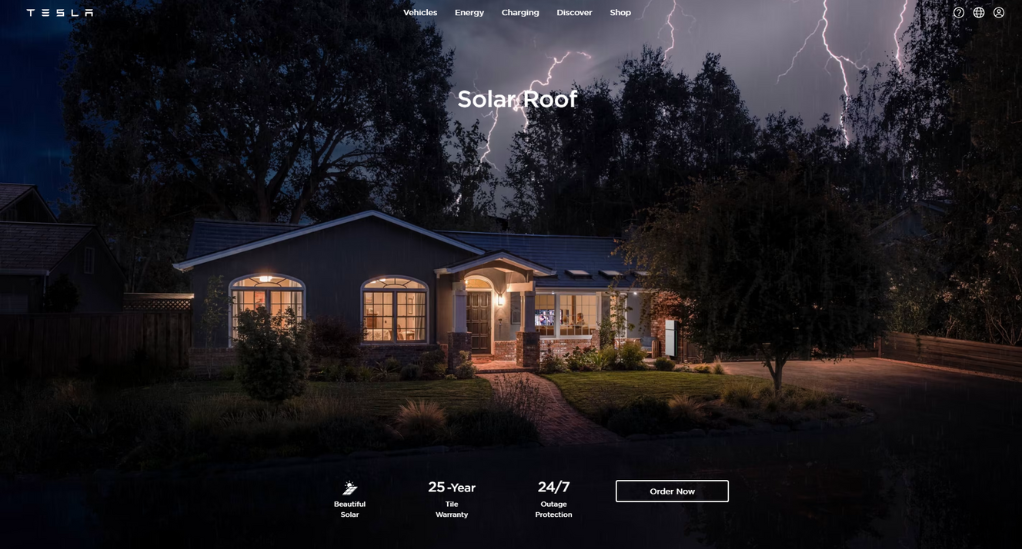
Background of Tesla’s Venture into Solar Energy
Tesla, a name synonymous with electric vehicles, has been steadily expanding its footprint in the renewable energy sector. The company’s foray into the solar energy market began with the acquisition of SolarCity in 2016, a move that signaled Tesla’s ambitious plans to become a key player in the renewable energy market. The Tesla roof, a brainchild of this acquisition, represents a fusion of sustainable energy production and aesthetic design, promising to revolutionize the way we perceive and use solar energy in our homes.
The Inception of Tesla Roof
The Tesla roof, also known as the Tesla Solar Roof, is a remarkable blend of solar panels and roof tiles. This innovative product was designed to overcome the aesthetic and functional challenges posed by traditional solar panels. The Tesla roof integrates solar cells directly into the roof tiles, allowing homeowners to harness solar energy without compromising on the aesthetic appeal of their homes.
Tesla’s Vision: A World Powered by Sustainable Energy
Tesla’s venture into the solar energy sector aligns perfectly with the company’s broader vision of accelerating the world’s transition to sustainable energy. By introducing products like the Tesla roof and Tesla batteries for solar energy storage, the company aims to create a cohesive ecosystem where homes can generate, store, and utilize solar energy efficiently, reducing reliance on non-renewable energy sources.
Importance of Renewable Energy Sources
In the face of escalating climate change concerns, the shift towards renewable energy sources has never been more critical. The Tesla solar roof stands as a testament to the potential of renewable energy solutions in mitigating the adverse effects of climate change.
Reducing Carbon Footprint
One of the significant advantages of adopting renewable energy sources like solar energy is the potential to reduce one’s carbon footprint significantly. By harnessing the power of the sun, homeowners can generate clean, green energy, reducing the reliance on fossil fuels, which are a major contributor to greenhouse gas emissions.
Financial Benefits
Aside from the environmental benefits, investing in a Tesla solar roof can also bring substantial financial gains. Through the generation of solar energy, homeowners can expect to see a significant reduction in their electricity bills. Moreover, with the integration of Tesla batteries for solar energy storage, excess energy can be stored for later use, further optimizing energy consumption and savings.
Comparison Table: Tesla Solar Roof vs. Traditional Solar Panels
| Aspect | Tesla Solar Roof | Traditional Solar Panels |
|---|---|---|
| Aesthetics | Seamless integration with roof tiles | Often bulky and noticeable on rooftops |
| Energy Production | Efficient energy production with integrated solar cells | High energy production but requires separate installation |
| Installation | Integrated installation with roofing | Requires separate installation on existing roofs |
| Maintenance | Low maintenance due to seamless design | May require more maintenance due to external installation |
| Cost | Higher initial investment but offers long-term savings | Lower upfront cost but may not offer the same level of aesthetic appeal |
Understanding the Tesla Roof
In the quest to find renewable energy solutions that are both efficient and aesthetically pleasing, the Tesla Roof emerges as a frontrunner. This section aims to provide a detailed insight into the design and functionalities of the Tesla Roof, helping potential buyers make an informed decision. Let’s delve deeper into understanding the Tesla Roof, its design intricacies, and how it integrates with existing home systems.
Design and Aesthetics
A Seamless Blend of Functionality and Style
The Tesla Roof is not just a solar panel system; it’s a complete reimagining of what a roof can be. The tiles are crafted with tempered glass, making them more than three times stronger than standard roofing tiles. Moreover, the solar cells are cleverly concealed within the tiles, offering a sleek and modern aesthetic that complements a variety of architectural styles.
Customizable to Your Home’s Needs
Tesla offers a range of tile styles to choose from, allowing homeowners to select a design that seamlessly blends with their home’s existing architecture. The tiles are available in a variety of finishes, including textured, smooth, and Tuscan, offering a customizable solution to suit individual preferences and regional architectural trends.
Active and Inactive Tiles: A Detailed Look
Maximizing Energy Production
The Tesla Roof comprises a combination of active and inactive tiles. The active tiles contain solar cells that harness solar energy, converting it into electricity that can be used to power your home. These tiles are strategically placed on the roof to maximize energy production, taking into consideration the roof’s orientation and sun exposure.
Maintaining Aesthetic Consistency
The inactive tiles, on the other hand, are non-solar tiles that maintain the roof’s aesthetic consistency. These tiles are used in areas where solar cells are not feasible due to shading or other structural constraints. Despite not housing solar cells, these tiles offer the same durability and aesthetic appeal as the active tiles, ensuring a uniform look across the entire roof.
Integration with Existing Home Systems
A Cohesive Ecosystem
One of the standout features of the Tesla Roof is its ability to integrate seamlessly with existing home systems. The solar roof works in tandem with the Tesla Powerwall, a battery storage system that stores excess energy produced during the day for use during the night or during power outages.
Smart Energy Management
Furthermore, the Tesla Roof integrates with the Tesla app, providing homeowners with real-time data on energy production and consumption. This smart energy management system allows homeowners to monitor and manage their energy usage efficiently, optimizing for peak times and potentially saving on energy costs.
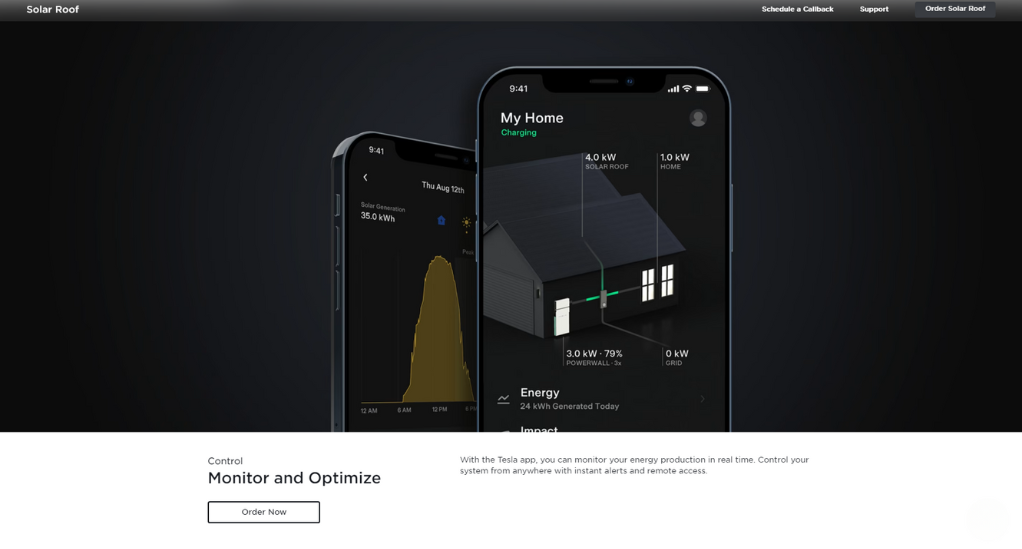
Tesla Batteries for Solar Energy Storage: A Preview
In the upcoming section, we will delve deeper into the world of Tesla batteries for solar energy storage, exploring how these innovative solutions can revolutionize the way we store and use solar energy in our homes. Stay tuned as we unravel the benefits of integrating Tesla batteries with your solar roof, offering a glimpse into a future where energy independence is a tangible reality.
Tesla Solar Energy: A Revolution
As we venture further into the realms of renewable energy, it becomes imperative to understand the core of Tesla’s innovation – the solar energy system. This section aims to shed light on how the Tesla solar roof harnesses solar energy, its efficiency, and a comparative analysis with traditional solar panels. Let’s embark on this enlightening journey.
How the Tesla Solar Roof Harnesses Solar Energy
A Technological Marvel
At the heart of the Tesla solar roof lies a technological marvel that seamlessly combines aesthetics with functionality. The solar cells embedded within the roof tiles are capable of capturing sunlight and converting it into usable electricity, a process known as photovoltaic energy conversion. This innovative approach ensures that homeowners can generate clean, renewable energy right at their doorstep.
Sustainable Living
By harnessing solar energy, homeowners are not only reducing their carbon footprint but also taking a significant step towards sustainable living. The Tesla solar roof promises a future where homes can be self-sufficient in terms of energy, reducing reliance on the grid and fostering a greener planet.
Efficiency and Energy Production: How Much Energy Does a Tesla Solar Roof Produce?
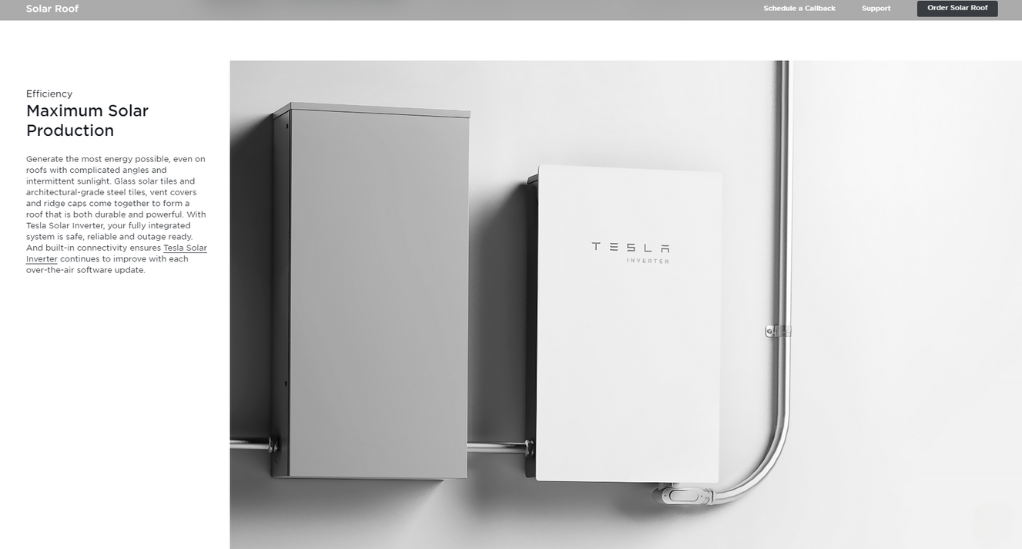
A Comparative Analysis
To truly appreciate the efficiency of the Tesla solar roof, it is essential to compare it with traditional solar panels. While the exact energy production can vary based on several factors including geographical location and roof orientation, on average, a Tesla solar roof is designed to meet the energy needs of a household comprehensively.
| Factors | Tesla Solar Roof | Traditional Solar Panels |
|---|---|---|
| Efficiency | High-efficiency solar cells integrated into roof tiles | Separate high-efficiency panels installed on the roof |
| Energy Production | Can be customized to meet the energy needs of a household | Energy production can vary based on the number and type of panels installed |
| Space Utilization | Optimal space utilization with integrated solar cells | May require more roof space for equivalent energy production |
Real-World Scenarios
In the subsequent sections, we will delve into real-world scenarios, providing insights into the actual energy production capabilities of the Tesla solar roof. Through case studies and testimonials, we aim to offer a comprehensive view of what homeowners can expect in terms of energy savings and benefits.
Comparison with Traditional Solar Panels
A Paradigm Shift
The Tesla solar roof represents a paradigm shift in the way we perceive and utilize solar energy. Unlike traditional solar panels, which are installed atop existing roofs, the Tesla solar roof integrates solar cells directly into the roof tiles, offering a seamless and aesthetically pleasing solution.
A Cost-Benefit Analysis
In the upcoming section, we will conduct a detailed cost-benefit analysis, comparing the initial investment and long-term savings offered by the Tesla solar roof with traditional solar panels. Stay tuned as we unravel the financial implications of investing in this revolutionary product.
Tesla Batteries for Solar Energy Storage
In the renewable energy landscape, the ability to store generated energy efficiently is a game-changer. Tesla, with its innovative battery solutions, has revolutionized the way we store and utilize solar energy. In this section, we will explore the intricacies of Tesla batteries for solar energy storage, and how they complement the Tesla solar roof to create a cohesive, self-sufficient energy ecosystem.
Tesla Powerwall
A Gateway to Energy Independence
Tesla Powerwall, a rechargeable home battery system, serves as a cornerstone in Tesla’s renewable energy solutions. Designed to store energy generated by the Tesla solar roof, the Powerwall facilitates energy independence by allowing homeowners to store excess energy for later use, thereby reducing reliance on the grid.
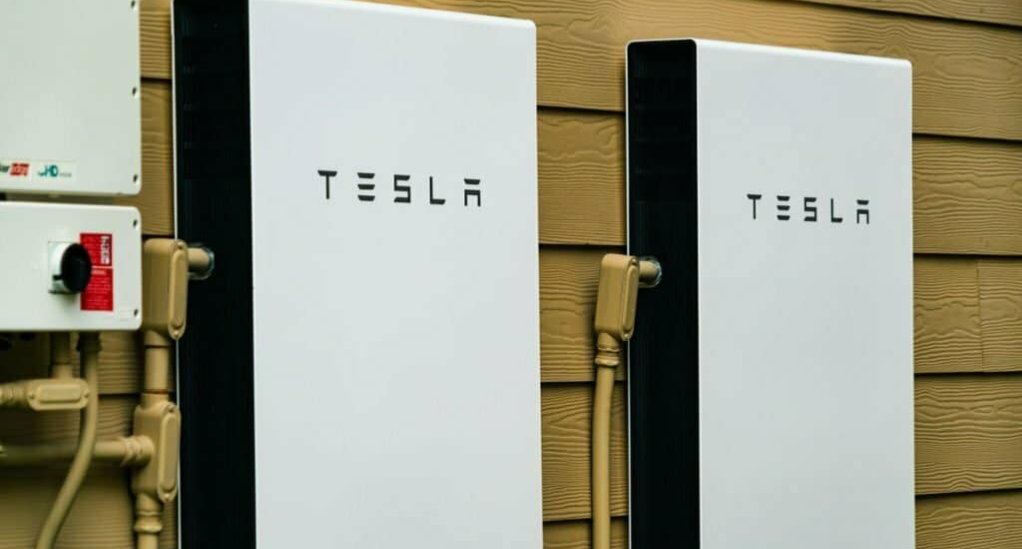
Seamless Integration with Tesla Solar Roof
The Powerwall integrates seamlessly with the Tesla solar roof, creating a symbiotic relationship where the solar roof generates energy during the day, and the Powerwall stores excess energy for use during the night or during power outages, ensuring an uninterrupted power supply.
Benefits of Integrating Powerwall with Tesla Roof
Optimal Energy Utilization
By integrating the Powerwall with the Tesla solar roof, homeowners can optimize their energy utilization, using stored energy during peak hours to avoid high electricity rates. This not only results in financial savings but also promotes efficient energy use.
Emergency Backup
In the event of a power outage, the Powerwall serves as an emergency backup, providing power to essential appliances and systems, thereby ensuring the safety and comfort of the inhabitants.
Energy Storage and Backup: Ensuring Uninterrupted Power Supply
A Sustainable Solution
The combination of Tesla solar roof and Powerwall presents a sustainable solution for homeowners seeking energy independence. This cohesive system ensures an uninterrupted power supply, even in the event of grid failures, fostering a resilient and self-sufficient home energy ecosystem.
Real-Time Monitoring and Management
Homeowners can monitor and manage their energy production and consumption in real-time through the Tesla app. This smart energy management system allows for adjustments based on usage patterns and needs, ensuring optimal energy utilization and savings.
Cost and Installation
Investing in a Tesla Solar Roof is not just a purchase; it’s a significant step towards a sustainable future. However, understanding the financial implications is crucial before making this substantial investment. In this section, we delve deep into the cost structure and the installation process of the Tesla Solar Roof, providing prospective buyers with a comprehensive view of what to expect.
A Breakdown of Costs Involved
Initial Investment
The initial investment for a Tesla Solar Roof can be substantial, encompassing the cost of the solar tiles, Powerwall (if opted), and installation. The total cost can vary depending on various factors including the size of the roof, the ratio of active to inactive tiles, and geographical location. Here, we provide a detailed breakdown of the potential costs involved:
- Solar Tiles: The cost per square foot for the solar tiles.
- Powerwall: The cost of integrating Tesla Powerwall for energy storage.
- Installation: The charges associated with the installation process, including labor and materials.
Long-Term Savings
While the upfront cost is considerable, it’s essential to factor in the long-term savings. The Tesla Solar Roof can significantly reduce or even eliminate electricity bills, providing substantial savings over time. Moreover, the integration of the Powerwall allows homeowners to utilize stored energy during peak hours, potentially saving on electricity costs.
Federal Incentives and Tax Credits
Leveraging Government Incentives
To encourage the adoption of renewable energy sources, various federal and state incentives are available for homeowners investing in solar energy systems. These incentives can significantly offset the initial investment cost. In this section, we will explore the different incentives available and how to leverage them to reduce the financial burden.
A Guide to Applying for Tax Credits
Additionally, we will provide a step-by-step guide to applying for federal tax credits, helping homeowners navigate the process seamlessly and avail the benefits offered by the government to promote renewable energy adoption.
Installation Process: What to Expect?
Pre-Installation Assessment
Before the installation begins, a pre-installation assessment is conducted to evaluate the suitability of the home for a Tesla Solar Roof. This includes assessing the roof structure, sun exposure, and calculating the potential energy production.
Installation Timeline
The installation timeline can vary based on several factors including the complexity of the roof structure and local permitting processes. In this section, we provide an overview of the typical installation timeline, helping homeowners understand what to expect at each stage.
Post-Installation Support
After the installation is completed, Tesla offers post-installation support to assist homeowners in understanding and managing their new solar energy system efficiently. This includes guidance on using the Tesla app for monitoring energy production and consumption, and tips for optimizing energy usage.
Tesla Solar Roof Review: User Experiences
As we navigate through the intricacies of the Tesla Solar Roof, it becomes essential to understand the experiences of those who have already embarked on this journey. In this section, we will explore testimonials and reviews from users, offering a glimpse into the real-world implications of investing in a Tesla Solar Roof.
Testimonials and Reviews from Users
A Community of Innovators
The Tesla Solar Roof has fostered a community of homeowners who are not just customers but innovators, leading the charge towards a sustainable future. Through testimonials and reviews, we aim to provide prospective buyers with firsthand insights into the experiences of these pioneers.
Real-Life Case Studies: Energy Savings and Benefits
To offer a comprehensive view, we will delve into real-life case studies, exploring the energy savings and benefits experienced by homeowners. These case studies will encompass a diverse range of scenarios, from urban settings to suburban homes, providing a well-rounded perspective on the potential advantages of the Tesla Solar Roof.
Maintenance and Warranty
As we venture further into the world of Tesla Solar Roof, understanding the maintenance and warranty aspects becomes crucial. In this section, we will explore the durability of the Tesla Solar Roof and the support provided by Tesla in ensuring a seamless user experience.
Warranty Details: What’s Covered?
Tesla offers a substantial warranty period for its Solar Roof, covering various aspects including the tiles, Powerwall, and the installation. Here, we dissect the warranty details, providing homeowners with a clear understanding of what’s covered and the support they can expect from Tesla.
Maintenance Needs and Long-Term Durability
One of the standout features of the Tesla Solar Roof is its low maintenance needs. The roof is designed to withstand harsh weather conditions, offering long-term durability. In this section, we explore the maintenance needs of the Tesla Solar Roof, providing tips and guidance on ensuring the longevity of the system.
Tesla’s Customer Service: A Review
Customer service plays a pivotal role in enhancing the user experience. Here, we review Tesla’s customer service, exploring the support and assistance provided to homeowners throughout their journey, from installation to post-install installation support.
Conclusion
As we reach the culmination of this comprehensive review, it’s time to step back and envisage the broader picture that Tesla is painting with its Solar Roof innovation. A picture that portrays a future where homes are not just shelters but self-sufficient entities, harmoniously intertwined with the environment, fostering a sustainable and green future.

